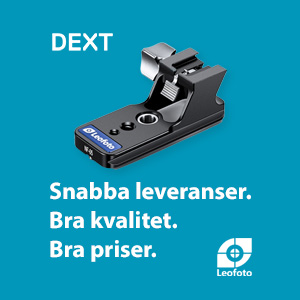Inga betänkligheter med tanke på diffraktionsbegränsningen med så små pixlar? Är inte uppföljaren till 5D mer intressant i dina ögon eller föredrar du APS-C?
Se Emils svar nedan.
Detta svar från Emil svarar också på en tidigare fråga du hade uppe :att du inte ser så stor skilnad vid nerbländning med din D3 , 8, 11,16, dvs upplösningen är för låg i D3 . Hade du haft högre sensor upplösning hade skilnaden setts tydligare , speciellt vid 16.Dvs att optiken tappar upplösning vid bl 11, 16
Jag tänker använda 50d som "telekamera" där upplösningen 15miljoner pixlar tillsammans med bra teleobjektiv upplösningsmässigt överträffar det mesta.
En 24x36 sensor måste ha 39miljoner pixlar om samma upplösning/utsnitt skall erhållas (tror jag har räknat rätt)
Svaret nedan är hämtat från dpreview och Emil
I've seen many comments to the effect that "Camera X with its small pixels is diffraction limited at f11, but camera Y with its bigger pixels is only diffraction limited at f16"; the OP is one of them. The implication is that camera Y is "less limited" by diffraction, and therefore somehow is producing sharper images less affected by diffraction.
This is incorrect. Loosely speaking, diffraction produces a spreading of light rays due to the finite size of the lens aperture; the amount of spreading is the same for a given aperture no matter what size pixels are in the sensor sitting on the focal plane of the camera -- it's a property of the lens optics, not the sensor.
What the sensor does is to record the image including the effects of the diffraction; the diffraction produces a slight blurring of fine detail. As usual, more pixels mean more resolution, and even though slightly blurred, the image is still resolved better with more pixels.
The mistake typically made is to think of the 100% pixel-level view is somehow absolute, and used to judge resolution (and noise) in images. But the monitor has fixed size pixels, and so 100% view is accomplished by magnifying the smaller pixels of camera X more than the larger pixels of camera Y. So 100% view is not absolute, it's relative to the size of the pixels in the sensor.
To make a correct statement about resolution, one should use absolute measures of resolution such as how closely spaced two lines can be (say in mm) and still be resolved by the sensor. So absolute resolution measures are given in lines or line pairs/mm.
DPReview uses a slightly different (but also common) measure of resolution in its lens tests, line pairs/picture height. This is useful since it gives the resolving power as a percentage of frame size, and is thus independent of sensor format (one can sensibly compare tiny sensor digicams with full frame DSLR's for resolution). But the OP asked about comparing diffraction effects of large vs small pixels on a FF sensor.
DPReview tests lenses on both the 40D and 5D, two different format sensors with two different size pixels as well. The 5D has 12MP, a hypothetical FF sensor with pixels the size of the 40D would have over 25MP; let's call this hypothetical camera the 1Ds Mk40D. Since we are imagining two sensors of the same FF size, the 5D and the 1Ds Mk40D, the resolution in lp/mm and line pairs/picture height are equivalent.
But what we have in hand are resolution tests on the APS-C 40D and the FF 5D, in line pairs/picture height, and the picture height in mm is different for the 40D and 5D so they are not comparable measures. So we make them comparable by dividing each by the frame height in mm (resolution of N lp/ph times 1 ph/24mm gives resolution in lp/mm for the 5D, and resolution of M lp/ph times 1 ph/14.8mm for the 40D gives resolution in lp/mm for the 1Ds Mk40D).
One other potential pitfall -- the DPR tests give resolution at different points across the frame, as a percentage of frame size from the center to the corners. But away from the center by a given percentage is imaging a different part of the lens on the 40D than it is on the 5D; one must either compensate for that, or more simply just use the center results since that's the same for both.
So using the center resolution values in lp/ph for the DPR test of the 70-200/2.8, I divided by the respective ph's in mm and found that the 1Ds Mk40D has higher resolution than the 5D at ALL apertures, *even when the optics is severely diffraction limited*. The main effect of diffraction is to limit the amount of improvement to be got from smaller pixels; the improvement is over 40% at f5.6, but only about 10% at f16 and beyond. But it's always an improvement.
--
emil
--







